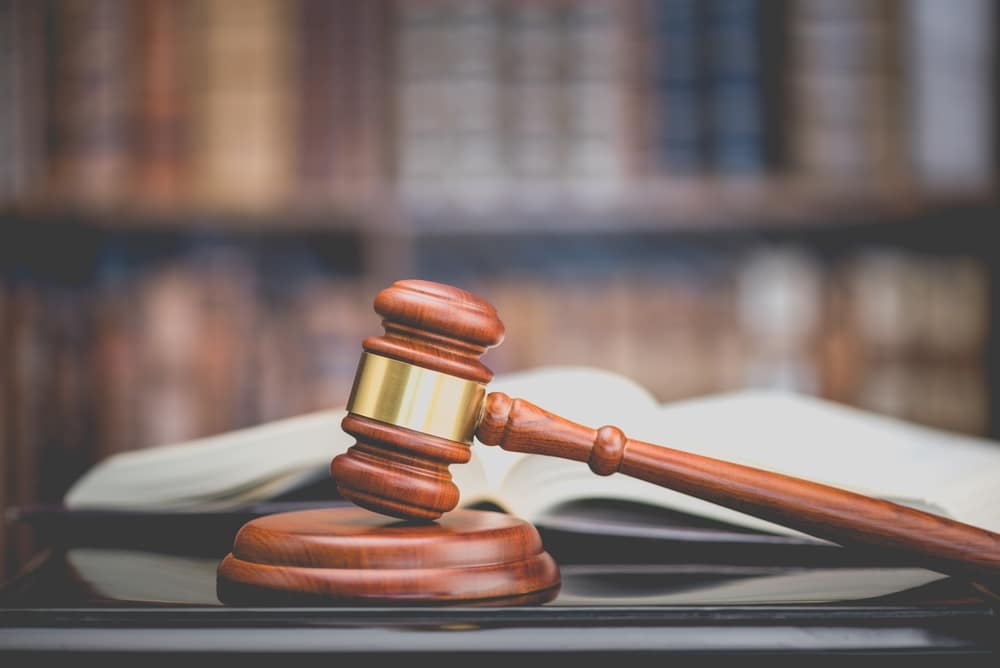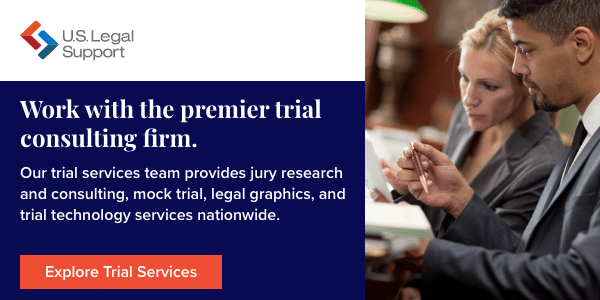How to Select a Jury: Guide for Lawyers

In most legal battles in the US, the ultimate decisions about guilt or innocence—along with sentencing and other concerns—are made not by attorneys or judges but by the jury panel. The role every citizen is responsible for playing is one that’s critical to fair trials. And, to ensure that they go in your clients’ favor more often than not, you’ll want to perfect the art of jury selection.
Below, we’ll discuss some of the most important considerations for jury selection, starting with an overview of the process. Then, we’ll get into the criteria to target across questions and strikes, a holistic approach to prioritize, and some underlying ethical considerations.
Overview of the Jury Selection Process
In legal battles that require a jury panel, there is a formal process for its selection outlined across the Constitution and 28 U.S. Code Chapter 121 and shaped over years of tradition and precedent.1 The granular specifics of jury selection differ across individual U.S. states, as well as different kinds of cases (i.e., criminal or civil) and severities (i.e., misdemeanor or felony charges).
However, the basics are the same across almost all legal contexts.
To wit, courts create lists of potential jurors through relevant legal documents, such as drivers’ licenses or tax records. Random prospective jurors are called to a courthouse on specific days, forming juror pools or venires. A subset of the pool is called to sit in the jury box, provisionally, and they are asked questions by the trial judge and attorneys to determine whether they will be retained or struck. This process, the most important—and challenging—part, is called voir dire.
Criteria for Selecting Jurors
During voir dire, attorneys have a limited amount of time to ask questions of the potential jurors. What they are looking for in their pointed questions are indications that an individual can or cannot (or is likely/unlikely to) make a fair judgment based only on the facts of the case. Understanding how to conduct voir dire effectively is crucial for attorneys to identify biases and help ensure a fair trial.
Attorneys ask questions regarding jurors:
- Experiences – Events in the jurors’ lives that could impact their perspective on the case, such as similar or tangential circumstances to victims, defendants, and other key parties.
- Beliefs – Things the jurors know to be true or have a strong conviction about, including both seemingly objective knowledge (always subjectively filtered) and articles of faith.
- Values – Moral and other judgments the jurors may hold as principles, either in relation to their knowledge, beliefs, and experiences (i.e., religious tenets) or in spite of them.
If an individual juror’s statements indicate they could be partial or biased, an attorney can strike for cause and, pending trial judge approval (and questions from the opposition), have them removed.
Another, more nebulous tool at attorneys’ disposal is the peremptory challenge. Each attorney will have a finite number of free strikes they can use without stating a reason—provided they don’t use the challenge to discriminate. Additionally, they may state that the potential juror would not serve their client’s interests or retry a strike for cause that had not been granted.
Understanding Demographics and Psychographics
When determining whether a juror will be a good fit, underlying demographic factors can be a good starting point. Location can be a proxy for affluence and, by extension, education (i.e., familiarity with legal processes). That could work for or against you, depending on the case.
However, over-valuing assumptions based on potential jurors’ demographics is one of the biggest and most common jury selection mistakes that attorneys of all stripes make.
For example, it might be easy to assume that a person from a particular racial, ethnic, religious, or linguistic group would have an affinity for and unconscious bias in favor of other members of the same group. However, in practice, an individual’s lived experience may include complicated relationships with their family or other members of the community. These factors may not be obvious in voir dire. But, during the trial process, the juror might actually judge members of their own community more harshly than they do others outside of it—to the detriment of your case.
A better way to approach these decisions is to construct a dynamic psychograph informed by potential jurors’ personal experiences rather than just their likely (i.e., on paper) predilections.
Conducting the Jury Selection
Jury selection generally and voir dire specifically are about giving your client the best chance to achieve a favorable outcome by minimizing the chance that the jury will be biased against them.
In other words, you’re looking to sniff out and neutralize harmful biases.
In theory, it might be stipulated that the best juror is one biased in favor of your client. But, in practice, pursuing jurors like that wouldn’t work. In getting them to say something indicating a positive bias for your client, your opposition would register it as a negative bias against theirs.
So, a consistent winning voir dire strategy starts with a sharp focus on the main tools at an attorney’s disposal: strikes. Rather than thinking about which jurors you want to keep, you should be thinking about which ones you know you should eliminate. Early on in the selection process, you should create a priority list based on the certainty they’ll be harmful and the strength of your case to strike them—ideally for cause, but peremptory if need be.
Strategies for Questioning
Beyond the holistic approach above, there are also specific things attorneys can do in jury selection, especially the questioning process, to ensure their strikes are as effective as possible.
To that effect, The American Bar Association (ABA) recommends 11 best practices for voir dire2:
- Framing the process as a two-way conversation and valuing jurors’ contributions.
- Helping jurors understand the process holistically, acknowledging and addressing rather than hiding or being dishonest about the biases they may harbor—as all humans do.
- Prioritizing jurors’ voices and encouraging participation across the entire jury pool.
- Asking open-ended questions (i.e., how/why or speak on [x]) rather than closed-ended or otherwise limited ones (i.e., confirm/deny [x]) to encourage deep elaboration.
- Avoiding questions with socially desirable answers that encourage certain responses, whether they are honest or not (i.e., direct questions about the juror’s impartiality).
- Focusing on difficulty or ease located in a task rather than in a juror’s own (in)ability.
- Using indirect assessments of bias, such as asking about whether a seemingly neutral (but actually inscribed) claim would require more or less evidence than another thing.
- Building follow-up questions around answers that might hint at but not prove a bias.
- Asking reflective questions about what factors matter and the specific ways certain details about a case (or the case) might impact their decision-making process.
- Encouraging consistent participation throughout the entirety of the questioning.
- Being persistent and refusing to let jurors conceal information from you through obfuscation, canned responses, or other tactics. As a last resort, be blunt.
By following these practices, attorneys will get the most accurate and usable information out of the questioning process, which empowers the most effective strikes—for cause or peremptory.
Ethical Considerations in Jury Selection
Ethics factor into the voir dire process because, at base, you need to balance your client’s best interests with the need for a fair jury that is selected without prejudice. Attorneys must justify their strikes according to these maxims and make strategic use of peremptory challenges—like when a case for striking for cause is relatively weak or could be scrutinized by your opposition.
In recent years, the utility of jurors’ online presence has also raised ethical concerns.
For example, a landmark ABA article on the ethical considerations of voir dire in the digital age raised important questions about the dangers of peering into prospective jurors’ online profiles to understand how they might think.3 On a psychological level, we cannot say with confidence that a person’s online musings and consumption are a perfect reflection of their interests or values. On a moral and practical level, perusing a person’s profile can lead to incorrect and potentially discriminatory reasons to strike them—which may not survive a challenge.
On an even more basic practical level, sleuthing and the questions it generates might alienate jurors before an attorney can get an accurate sense of their likely outputs.
Pick Your Perfect Jury with U.S. Legal Support
Jury selection is one of the most important parts of any legal battle. Effective lawyers in all contexts know that they need a jury who’ll hear their client’s case fairly. But they’re also well aware of just how hard it can be to ensure your jury is made up of the best possible jurors for your client’s interests when your opposition is trying to do the exact same thing for their client.
Further, jury selection’s impacts are felt throughout the case, as information gathering during the process can inform effective jury research by way of shadow juries and mock trials.
At U.S. Legal Support, our trial services division, TrialQuest, helps attorneys with every step of these processes.
How to Select a Jury: Guide for Lawyers
Video Transcript:
In litigation, the jury holds the power to decide outcomes. A well-chosen jury can sway the verdict, making jury selection a pivotal step in any trial. But how does one ensure the right jury is selected?
Jury selection begins with forming juror pools from public records such as drivers licenses or tax records. Next, the process of voir dire, which involves questioning potential jurors to assess their suitability, is conducted. Each state and case type may have unique procedures for voir dire.
Voir dire is crucial for identifying biases. Attorneys use strikes for cause to remove biased jurors, while peremptory challenges allow dismissals without stated reasons. Understanding these tools is key to effective jury selection.
Effective voir dire involves asking open-ended questions to uncover biases. Attorneys should focus on jurors’ experiences, beliefs, and values. This helps in identifying those who might not judge the case fairly.
The American Bar Association suggests framing voir dire as a conversation. Encouraging juror participation and avoiding leading questions can reveal deeper insights, aiding in the selection of an unbiased jury.
Ethical considerations in jury selection are paramount. Attorneys must balance client interests with fairness. The rise of digital footprints adds complexity, as online profiles may not accurately reflect a juror’s true biases.
In the digital age, ethical jury selection requires caution. Misinterpreting online data can lead to unfair strikes. Attorneys must ensure their strategies align with ethical standards, maintaining the integrity of the selection process.
By mastering jury selection, you enhance trial outcomes. Remember, a fair jury is crucial for justice. Now, apply these insights in your next case to ensure a balanced and impartial jury.
Sources:
- Cornell Law School. 28 U.S. Code Chapter 121 – JURIES; TRIAL BY JURY. https://www.law.cornell.edu/uscode/text/28/part-V/chapter-121
- American Bar Association (ABA). 11 must-dos from a voir dire master. https://www.americanbar.org/news/abanews/publications/youraba/2019/march-2019/11-tips-for-effectively-conducting-voir-dire/
- ABA. Voir Dire Becomes Voir Google: Ethical Concerns of 21st Century Jury Selection. https://www.americanbar.org/groups/tort_trial_insurance_practice/publications/the_brief/2016_17/winter/voir_dire_becomes_voir_google_ethical_concerns_of_21st_century_jury_selection/

Editoral Policy
Content published on the U.S. Legal Support blog is reviewed by professionals in the legal and litigation support services field to help ensure accurate information. The information provided in this blog is for informational purposes only and should not be construed as legal advice for attorneys or clients.


